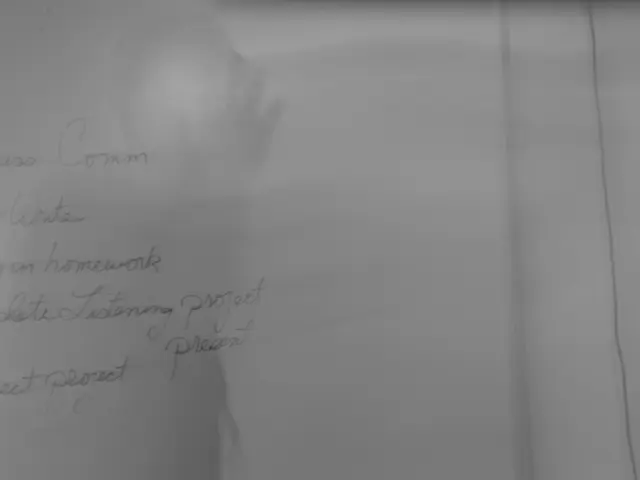Delaware's contentious offshore wind project faces uncertainty as the Trump administration reverses course on clean energy initiatives.
The US Wind offshore wind project in Delaware, initially set to generate 300 megawatts of electricity and power approximately 92,000 Maryland homes, is facing challenges due to federal intervention by the Trump administration [1][2].
The project, known as MarWin, involves undersea power cables running through Delaware state waters and wetlands, connecting to the grid near Indian River Bay [1][3]. However, Delaware state lawmakers' support for the project is not enough to bypass legal battles over the substation permit near Indian River [1][3].
The Trump administration's Interior Department has announced plans to reconsider and potentially rescind construction and operational permits previously issued under the Biden administration, as part of a broader freeze and regulatory pushback against offshore wind development [2][4][5].
If the project proceeds, it would significantly increase Delaware’s renewable energy capacity, advancing the state's clean energy goals and potentially stabilizing or reducing electricity costs through local clean energy generation [1][3]. However, the current federal opposition and legal uncertainty could delay or kill the project, maintaining Delaware's reliance on traditional energy sources and potentially leading to higher or more volatile energy costs.
The halting of offshore wind projects also creates uncertainty in the market and investment environment, indirectly impacting the cost and pace of Delaware’s clean energy transition [2][4]. Critics argue that PJM, the regional grid operator for Delaware, is not moving fast enough to connect new renewable energy sources to the grid.
Kris Ohleth, director of the Special Initiative on Offshore Wind, stated that the Trump administration is using various methods to question permitting documents that were previously uncontested [6]. The Department of the Interior plans to conduct an elevated review of department-related decisions and actions concerning wind and solar energy facilities, aiming to level the playing field for dispatchable, cost-effective, and secure energy sources like clean coal and domestic natural gas [7].
The US Wind subsidiary, Renewable Development, has appealed the county's denial of the permit to the Delaware Superior Court [8]. Another lawsuit against the MarWin project includes plaintiffs such as Ocean City, Maryland, Delaware's Fenwick Island, and the Caesar Rodney Institute, a Delaware think tank with connections to the fossil fuel industry [9].
The judge in both lawsuits against the MarWin project has approved a motion from the Department of the Interior and Army Corps to continue the cases until Sept. 5 while the government completes its re-review of the project [10]. The Bureau of Ocean Energy Management announced last month it was rescinding all of the designated wind energy areas in federal waters, ending the reserve of large areas of federal waters for "speculative wind development" [11].
Meanwhile, the Trump administration intends to level the playing field for dispatchable, cost-effective, and secure energy sources like clean coal and domestic natural gas, according to recent plans [12]. The Trump administration's actions are framed by Adam Suess, acting assistant secretary for lands and minerals management, as a means to tackle the "green new scam" and protect American taxpayers' dollars [13].
In summary, the US Wind offshore wind project in Delaware is entangled in federal regulatory and legal challenges that threaten its construction and operation. This jeopardy could delay or prevent Delaware from realizing the clean energy and economic benefits the project promises [1][2][3].
- The US Wind offshore wind project faces challenges due to federal intervention by the Trump administration, potentially delaying or even halting the project's construction and operation.
- The Trump administration's Interior Department plans to reconsider and potentially rescind construction and operational permits for offshore wind projects, including the MarWin project in Delaware.
- The MarWin project, if successful, would significantly increase Delaware’s renewable energy capacity, advancing the state's clean energy goals and potentially stabilizing or reducing electricity costs.
- However, the current federal opposition and legal uncertainty could lead to higher or more volatile energy costs, as Delaware might remain reliant on traditional energy sources.
- The halting of offshore wind projects also creates uncertainty in the market and investment environment, indirectly impacting the cost and pace of Delaware's clean energy transition.
- The Trump administration aims to level the playing field for dispatchable, cost-effective, and secure energy sources like clean coal and domestic natural gas, framing this as a means to tackle the "green new scam" and protect American taxpayers' dollars.




